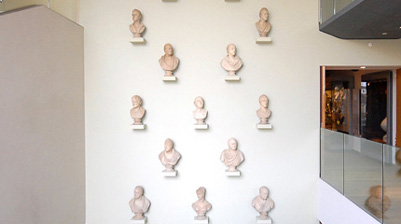Next Saturday the Ashmolean Museum in Oxford will reopen following the completion of a £61 million pound redevelopment. Rick Mather’s bright and spacious new extension is dominated by a grand central stairway, elegantly drawn in ziggurat lines of steel and glass on a tabula rasa of clean white walls. This high modernist Trojan horse has been cunningly inserted behind the grand facade of the existing museum, more than doubling the existing display area. It also provides a sequence of tall and generous galleries for temporary exhibitions and a glass-fronted rooftop restaurant with views across the city and its spires.
Equally important, the old Ashmolean has emerged from the many months of closure, dust and scaffolding not only unscathed but enhanced. The original museum is itself as precious as any of the remarkable works of art that it contains. Completed in 1845, to the designs of Charles Cockerell, and inspired by the temples of ancient Rome, it is arguably the last great Neoclassical building to have been erected in England.
The redevelopment of the Ashmolean was the brainchild of current director, Christopher Brown. It opens yet another chapter in the long and eventful life of a unique institution. The museum’s origins can be traced back to the curiosity of a single man, John Tradescant the Elder. A contemporary of Shakespeare, Tradescant was a pioneer in the fields of botany and gardening. Born into the first great age of global exploration, he ranged far and wide in search of rare plants and shrubs. Along the way, he developed an insatiable appetite for collecting all kinds of other things too: the skeletons of exotic animals, rare shells, artefacts fashioned by the peoples he encountered on his travels to Russia, Africa and the West Indies. His son, who was one of the earliest English...


